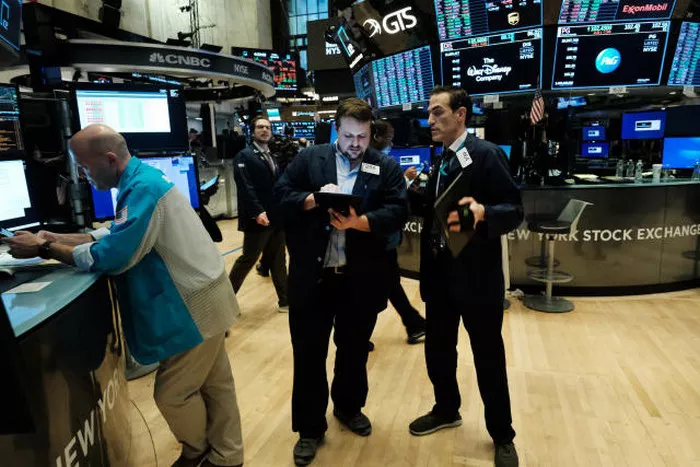In the fast-paced world of financial markets, futures trading plays a pivotal role in providing investors and traders with a mechanism to manage risk, speculate on price movements, and enhance their investment strategies. Futures, as financial contracts, allow participants to buy or sell a predetermined quantity of an underlying asset at a specified price on a future date.
Understanding Futures Trading
Futures trading is a type of derivative trading where investors agree to buy or sell a particular asset, commonly commodities, financial instruments, or indices, at a predetermined price and date. These contracts facilitate hedging against potential price fluctuations, allowing market participants to secure prices today for transactions they plan to conduct in the future. The key distinction between futures and other financial instruments lies in their standardized nature, which ensures uniformity across the market.
Significance of Futures Trading
The significance of futures trading is multifaceted. Firstly, it provides a mechanism for producers and consumers to hedge their positions against price volatility. Consider a scenario where a wheat farmer wishes to secure a price for their upcoming harvest. By entering into a wheat futures contract, the farmer can lock in a price, safeguarding against potential losses due to adverse price movements. Similarly, manufacturers can utilize futures to mitigate risks arising from fluctuations in raw material prices.
Futures Trading Mechanics
Understanding the mechanics of futures trading is imperative to harness its potential. Let’s delve into an example to elucidate the process. Imagine an oil company concerned about the fluctuating prices of crude oil. To hedge against potential losses, the company enters into a crude oil futures contract. The contract specifies the quantity of crude oil, the price, and the future date of the transaction.
As the contract’s expiration date approaches, the futures price converges with the spot price (the current market price of the asset). If the futures price is lower than the spot price at the contract’s expiry, the company gains from the transaction, offsetting the losses incurred due to higher market prices. Conversely, if the futures price is higher, the company might face losses on the contract, but these losses could be mitigated by the reduced cost of purchasing crude oil at a fixed, lower price.
Real-World Example 1: Agricultural Futures
Agricultural futures are amongst the most prevalent examples of futures trading. Farmers and agricultural companies frequently engage in futures markets to manage price risks associated with their produce. For instance, consider a coffee producer who anticipates a bountiful harvest in the upcoming months. To secure a favorable price, the producer can sell coffee futures contracts at the current market price. This mitigates the risk of a potential price decline when the harvest is ready for sale.
Real-World Example 2: Equity Index Futures
Equity index futures enable investors to speculate on the future performance of stock market indices, such as the S&P 500 or the Dow Jones Industrial Average. Let’s take an example of an investment fund manager who believes that the stock market will experience a bullish trend in the coming months. To capitalize on this forecast, the manager can buy equity index futures contracts. If the market performs as predicted, the gains from the futures contract could offset potential losses in the fund’s equity holdings.
Commodity Futures Example: Crude Oil
The energy sector is rife with examples of commodity futures trading. Crude oil, being a critical global commodity, serves as a pertinent illustration. Imagine an airline company concerned about the rising prices of jet fuel, a derivative of crude oil. By entering into crude oil futures contracts, the airline can lock in prices for future fuel purchases. If crude oil prices surge before the contract’s expiration, the airline is shielded from the impact, as it can still buy at the lower contracted price.
Currency Futures Example: USD/EUR
Currency futures allow market participants to speculate on the exchange rate between two currencies. Consider a multinational corporation operating in the United States that expects to receive a substantial payment in euros several months down the line. To safeguard against potential fluctuations in the USD/EUR exchange rate, the corporation can enter into currency futures contracts. This ensures that the eventual payment remains unaffected by adverse exchange rate movements.
Risk and Reward in Futures Trading
While futures trading offers numerous advantages, it is not without risks. The leverage inherent in futures contracts can magnify losses, as a small adverse price movement can result in substantial financial repercussions. However, the same leverage can also amplify gains if the market moves in the trader’s favor. Thus, prudent risk management strategies are essential for success in futures trading.
Conclusion
In conclusion, futures trading is a dynamic and essential component of global financial markets. Its ability to facilitate risk management, provide speculative opportunities, and enhance investment strategies underscores its significance. Through real-world examples spanning commodities, equities, and currencies, we’ve explored how futures contracts operate in diverse contexts. However, it’s crucial to acknowledge that while the potential for substantial gains exists, the inherent risks necessitate a comprehensive understanding of the market and diligent risk management practices. As markets continue to evolve, futures trading will undoubtedly remain a cornerstone of modern finance.


